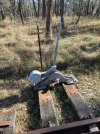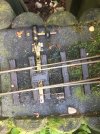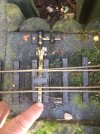Nodrog1826
Professional Idiot
I have a feeling that I have asked this before.
Has anyone out there come up with a simple method of returning points to their set lay after a train has pushed through them.
So trains will allways take the same route on a passing loop and the return to the main line when exiting, and then reset the point,
Whilst I know there are the manual switches, I find that the "spring" tension is too tight at times and can cause lighter vehicles to derail when pushing through.
Adjusting the spring tension has been a bit hit and miss with me.
Leccy point motors will allow pushing through, but don't return to the set lay afterwards, which if you forget when running a single train,
gives you head on collision if you then run two opposing trains.
In effect what i want to do is, allways have the train in one direction staying on the main, and the opposing train going into the loop, no matter how many or few I run.
Has anyone out there come up with a simple method of returning points to their set lay after a train has pushed through them.
So trains will allways take the same route on a passing loop and the return to the main line when exiting, and then reset the point,
Whilst I know there are the manual switches, I find that the "spring" tension is too tight at times and can cause lighter vehicles to derail when pushing through.
Adjusting the spring tension has been a bit hit and miss with me.
Leccy point motors will allow pushing through, but don't return to the set lay afterwards, which if you forget when running a single train,
gives you head on collision if you then run two opposing trains.
In effect what i want to do is, allways have the train in one direction staying on the main, and the opposing train going into the loop, no matter how many or few I run.




